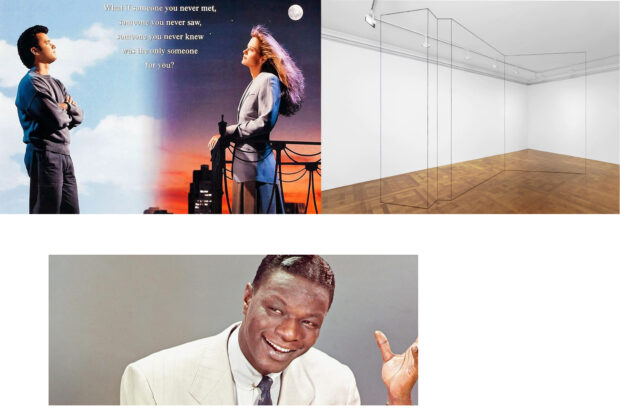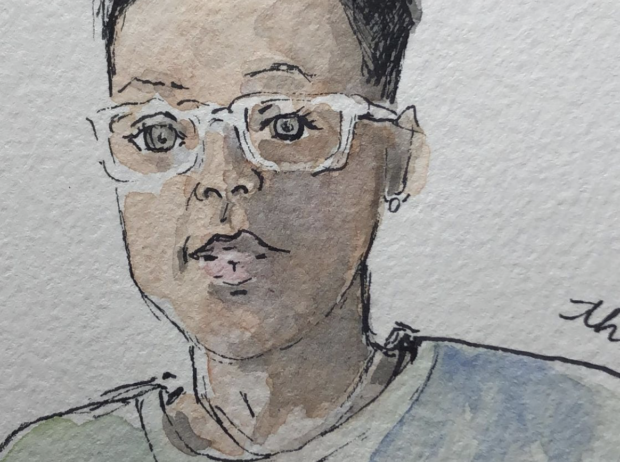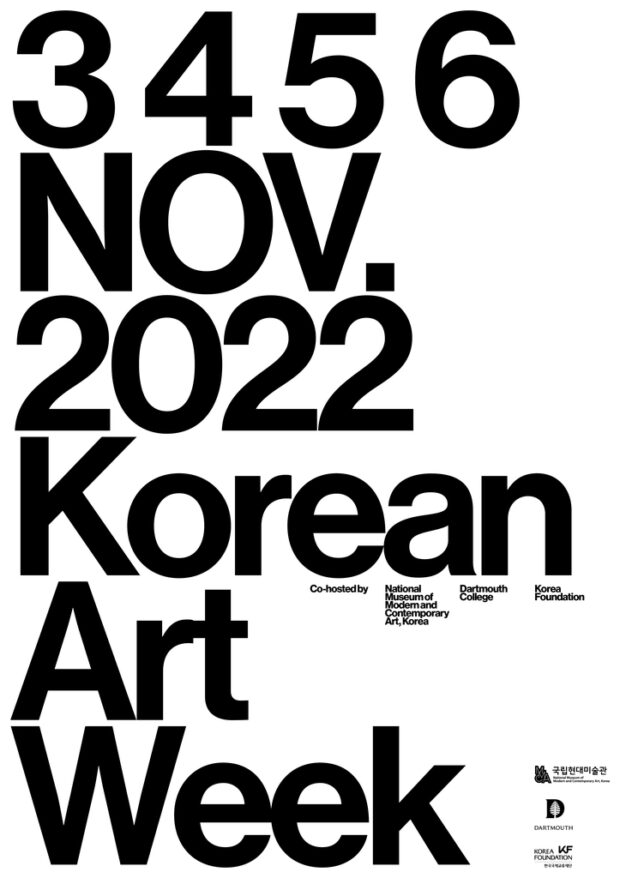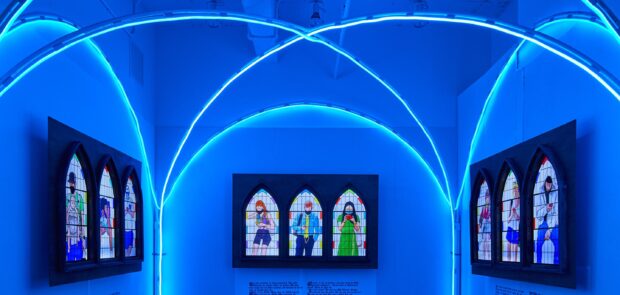One would be hard-pressed to think of a more ambitious exhibition than Caribbean: Art at the Crossroads of the World, which opened this summer at El Museo del Barrio, The Studio Museum in Harlem, and the Queens Museum of Art. A sprawling, dizzying mess of a show that spans three institutions, over five hundred objects, and more than two centuries of history, it aims for nothing less than a redefinition of the Caribbean itself, not as a geographic area or even a shared cultural experience, but rather as a conceptual matrix. This is a noble undertaking, as it foregrounds a history and an art history that have been woefully neglected until now. It is also a necessarily impossible one, and the final result is alternately enlightening and confounding. Above all else the exhibition demonstrates, strangely to its credit, a striking inability to sum up the Caribbean, and perhaps the folly of attempting to do so at all.

Nearly a decade in the making, the show most notably puts forth an expanded consideration of the Caribbean beyond its traditional geographic limits. Basin countries such as Venezuela and Colombia, as well as portions of Central America and the Gulf states, are represented, and their inclusion broaches topics that begin to reveal the fluidity and porosity of the region. The consideration of European traveler artists as well as references to the contested political and economic influence of the United States begins to undo many stereotypes about the Caribbean, contextualizing it as a site of prolonged contact, exchange, and hybridity.
In keeping with such a broad focus, the show maps the Caribbean thematically, taking the Haitian Revolution of 1791–1804 as a rough starting point but coalescing around six general themes. As the unofficial beginning of the exhibition (since closed), the Studio Museum predominantly looks at the historical facets of the Caribbean with two categories that center on issues of perception, presentation, and identity: “Shades of History” considers the role of race from the Revolution to contemporary class inequalities, while “Land of the Outlaw” explores utopian and dystopian stereotypes. For its part, El Museo introduces questions of commodification and self-determination, with “Counterpoints” tracing the transition from agriculturally-based export economies to those of petroleum and tourism; “Patriot Acts” serves as a political corollary that engages notions of national and cultural identity. But the largest installment is at the Queens Museum. “Kingdoms of This World,” taking its title from the 1949 novel by Alejo Carpentier, links the historical legacy of colonialism with popular religious traditions that embody both hybridity and resistance. It brackets the comparably smaller but no less extensive “Fluid Motions,” which focuses on the theme of water to addresses the geographic and economic specificities of island and coastal life.

Any of these themes would make for a fruitful, complex exhibition; taking in six of them proves a daunting task, and one that is hampered by the decision to use salon hanging in the installations. With works clustered together on the walls in all three museums—most pronounced in the Queens Museum, which features an open, two-story atrium—the effect is one of sheer profusion. To a certain extent such a hanging may be required given the limitations of space. The geographic, chronological, and stylistic juxtapositions produced by the salon style, however, indicate that it was borne less out of necessity than of curatorial choice.
At times these contrasts are quite effective: at El Museo, for example, a wall of paintings by self-taught or “intuitive” artists faces an assortment of more Surrealistically-minded work, bringing to light the fraught relationship between European expectations and New World practices and traditions. More frequently, however, the effect is one of over-stimulation and imbalance. Works hung at eye-level receive a visual advantage over their counterparts hanging five or ten feet above, and this implied hierarchy obscures some of the most noteworthy pieces of the entire show, which are lost in the din. Edna Manley’s Prayer (1936) and René Portocarrero’s Cuban Carnival (1953) at the Queens Museum are two particularly dismaying instances.

Much more problematic is the dearth of explanatory text that would help guide the visitor through such a dense accumulation of objects. Remarkably, for an exhibition that purports to resuscitate a forgotten history for an audience previously unfamiliar with these works, it offers little to no information that would facilitate understanding. “Shades of History” at the Studio Museum contains, somewhat inexplicably, works by the Scottish artist Joseph Bartholomew Kidd painted after John James Audubon. No explanation is given for the inclusion of Kidd’s depictions of woodpeckers, whether they be a sly reference to Audubon’s birth in Saint-Domingue or an example of a taxonomic approach to the natural world akin to the systematization of racial categories.
Indeed, the viewer is very much left to his or her own resources to navigate and make sense of a dizzying array of work that ultimately raises more questions than answers, ironically glossing over some of the complexities the curators hope to reveal. “Shades of History,” for example, reduces the convoluted racial dynamics of the Caribbean to a black-white binary that neglects the entire history of the indigenous Taíno people, not to mention the presence of Asians. “Kingdoms of This World” fares even less well, as it is the section that most explicitly evokes some of the most well-known, persistently reproduced imagery of carnival and popular traditions. The general invocation hinders a nuanced discussion of the richness and plurality of faith and practice in the region, flattening the Caribbean into a single entity characterized by an aesthetic of color, dance, and hybridity that veers dangerously close to stereotype. This is a stunning turn for a section that elsewhere includes documentation of Guillermo Gómez-Peña and Coco Fusco’s The Couple in the Cage (1992-93), which parodies and explodes such portrayals. In the face of these contradictions, the thematic framework threatens to collapse into an unfocused smattering of objects that seemingly have little or nothing to do with one another.

Yet perhaps Caribbean’s unrelenting resistance of narrative works, strangely, in its favor. To be sure, this is an exhausting, frustrating show, but it is also a fundamentally impractical one. Caribbean will not be the final word on the subject, but that is in part because it has proven that a definitive summation will never be possible. The fact that it was mounted in the first place constitutes a major victory in terms of visibility and awareness, and if this review has been harsh it is because—perhaps unfairly—there is so much at stake in this curious exhibition, which works far better in theory (and in book form) than in practice.

If the exhibition verifies anything, though, it is that the Caribbean functions more as an abstract concept than a single, concrete culture. No single visit or single exhibition will ever fully encompass it, and by breaking the show up into three venues it encourages repeat visits, multiple considerations. Its very lack of coherence destabilizes any preconceptions a visitor might have of the region, and that may well be its most lasting legacy. The exhibition works best when it tests the limits of those preconceptions, as it does most quietly and poetically in Melquíades Rosario Sastre’s The Fleet (1984), an artistic intervention that places foam ships—or are they islands?—in the bay of Robert Moses’s celebrated Panorama of the City of New York (1964), itself a Caribbean city. It is a subtle reminder that the Caribbean is not limited to easily digested tropical scenes but is instead much more elusive, and much more difficult to pin down.











Caribean art is nice, lots of different categories and styles 🙂